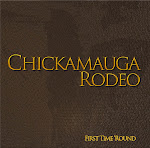Making "Sense" of Design -
Daniel Pink speaks of the six senses in his book, A Whole New Mind. The first sense that he speaks of is the sense of Design. Pink defines Design quite well, and mentions the ideas of problem solving. He uses other designer's definitions as well.
The idea of problem solving is continuously brought about throughout the chapter, even when discussing the business of design. As a designer and design educator, I 100% support Pink's ideas regarding design as a major form of problem solving. What I would like to do is potentially elaborate on what I feel was not emphasized well enough throughout the Chapter dealing with design.
Communication
Communication is a major element that must be part of a design. It is important for one to communicate their ideas to others. Design has been given more evolved names such as Visual Information and Visual Communication for a number of reasons. Mostly, because it is the art of communicating actual information and solutions to others. In the book, the argument is made about the first human in a "loincloth" scraping rocks on the sides of caves as the first true form of design as a form of problem solving. Also, a reference is made to hunting tools, such as spears and arrow heads being designed. These are effective design and engineered pieces, however if they were NOT communicated effectively, no one else would be able to see how they were made, replicate it, and keep it going.
Also, Designers must be good communicators, as it is a means of selling. We must sell our solutions to others. Designers have to make a living too, and "starving artists" must be able to communicate their ideas effectively. Scenario: You have the next BIG Idea. You cannot communicate with others. You do not sell that idea.
I often use the scenario of JP Morgan and Thomas Edison. The invention of electricity as a form of electric lighting is one of the most amazing breakthroughs in the history of mankind, and only one of many, many game changing inventions by Edison. The streets are lit, and the sidewalks are safer as a result of the electric light. It took a visionary such as Edison to create it, but it took a sound business communicator like JP Morgan to take the idea and solution created by Thomas Edison and sell it to others. The first house lit in america with electric light was JP Morgan. It was at the party he hosted to communicate this idea of lighting that he developed General Electric's Board of Directors.
Communication is an integral part of the success of a design. It is necessary through the process, and a must when the solution is resolved.
Prethinking / Summative Project
10 years ago







